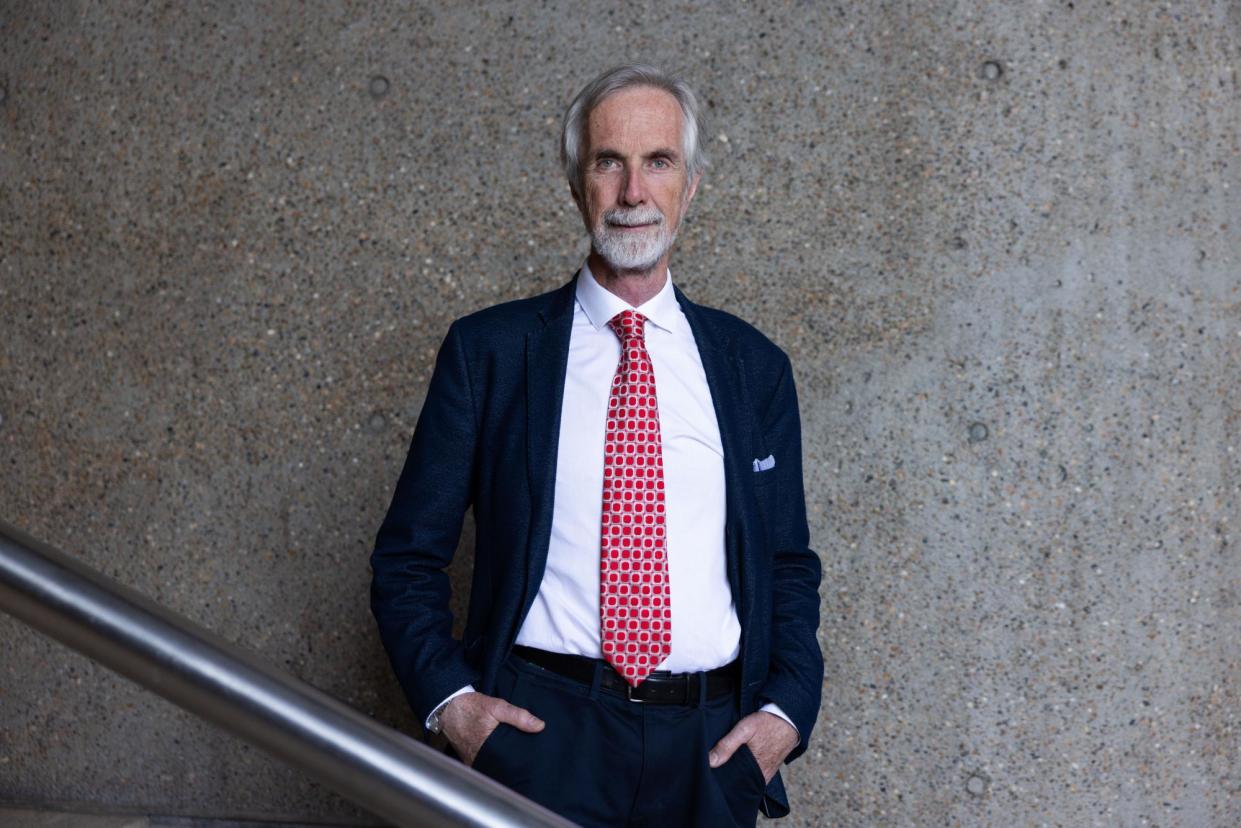Australia’s first high-speed rail link could ease house prices and widen the dating pool, UK expert says

Ensuring Australia’s decades-long high-speed rail project maintains enough support to be built requires the public to be constantly reminded of its benefits, such as easing property prices, providing better job opportunities and even widening the dating pool, a British expert has urged.
Prof Andrew McNaughton, the chair of the UK’s Network Rail High Speed, also warns that the Albanese government’s push to build high-speed rail along Australia’s east coast, starting with a Sydney-Newcastle section, is “doomed” to fail unless planners split the first stage into an even smaller, achievable stretch to Gosford.
McNaughton, the British rail expert whom the former New South Wales government sought out to develop its now-abandoned fast rail strategy in 2018, delivered the message while visiting Sydney to speak at a conference hosted by advocacy group Australian High Speed Rail Association on Tuesday.
There he stressed that a key lesson from the UK’s recent axing of part of its HS2 high-speed line had been the need to constantly sell the benefits of fast rail to the public even when initial business cases and stages had government funds.
“We forgot once we got permission, once we got an act of parliament, once we got the right to build this thing, we forgot that you have to go and re-justify it every day. If you just go ‘Oh we got planning permission, we’re gonna build it’, you’ll lose it. That’s what we found. You have to go out and influence and influence and influence until the day the first train is running,” he said.
As such, he said that maintaining public support for high-speed rail in Australia was crucial and, in addition to advertising the benefits, the project should focus on opening a Sydney-Gosford line as soon as possible, instead of completing the various tunnelling megaprojects to Newcastle to open the corridor all at once.
McNaughton, on the sidelines of the conference, said the Sydney-Newcastle stretch, for which a business case is now being worked on by the federal government’s newly formed High Speed Rail Authority (HSRA), would be “doomed” if it aimed to wait and open all in one go, as has been alluded to.
“It’s got to be built in stages, the supply chain just can’t build it in one go,” McNaughton said, recalling a realisation he had working on a train line in the UK that he would need to hire more than the total number of trained ecologists in the country all at once to have concurrent construction across the line.
“There’s not enough builders [in Australia], so all you’ll do is cut the supply chain, the price will double, and they still won’t get it done because there’s not enough of them.”
“You just need to get something open, you need to start running some trains,” he said.
During a panel at the conference, McNaughton said building in stages was a “necessity” to build and open a Sydney-Gosford high-speed line first, as a subsection of the Sydney-Newcastle first stage.
“It’s perfectly possible to, if you get to Gosford and then go the rest of the way on snail rail like we do today,” he said.
McNaughton said an array of economic opportunities would unfurl for Gosford and the Central Coast at that point.
In line with his shelved strategy for fast rail in NSW, which has been hidden by successive state governments, McNaughton stressed that because high-speed rail is always extremely costly to build and rarely profitable to operate, it cannot be seen as solely a transport project – but rather an economic one to create housing opportunities and make living outside cities such as Sydney more feasible for occasional office visits, business and leisure trips.
Explaining to citizens the benefits of how high-speed rail would unlock short visits to other cities, to keep them excited for the future technology, was a crucial part of his shelved fast rail vision, McNaughton told Guardian Australia.
“It’s all about people travelling because they want to do things. Let’s say it’s a Friday night and you’re a young man and you want to go see a girl in Newcastle? It’s a 40 minute or an hour trip, you can do it and come back to Sydney for the evening.”
McNaughton said such “day in the life” scenarios, which also included grandparents who had retired to the Central Coast or Newcastle visiting their family in Sydney more frequently as day trips instead of fewer, longer trips due to the burden of travelling, had been featured in his advice to the NSW Coalition government before it abandoned its fast rail plan.
Graham Nelmes, general manager of customer, place and operations at the federal government’s new HSRA, when asked about McNaughton’s plea to split the Sydney-Newcastle line into a smaller stage to Gosford first, said the idea was “just an option” but not part of current plans.
“We recognise it is 150 kilometres. We’ll explore how that’s packaged, how that’s staged, etc, as part of the business case, but at this point in time the focus is Sydney to Newcastle,” Nelmes said.
Earlier this month, HSRA’s CEO, Tim Parker, spoke of his vision to build an entirely new, dedicated rail line between Sydney and Newcastle – something expert groups such as Fasttrack Australia warn risks costs blowouts and losing support – to achieve a one hour travel time between the two cities, with a halfway stop at Gosford.


